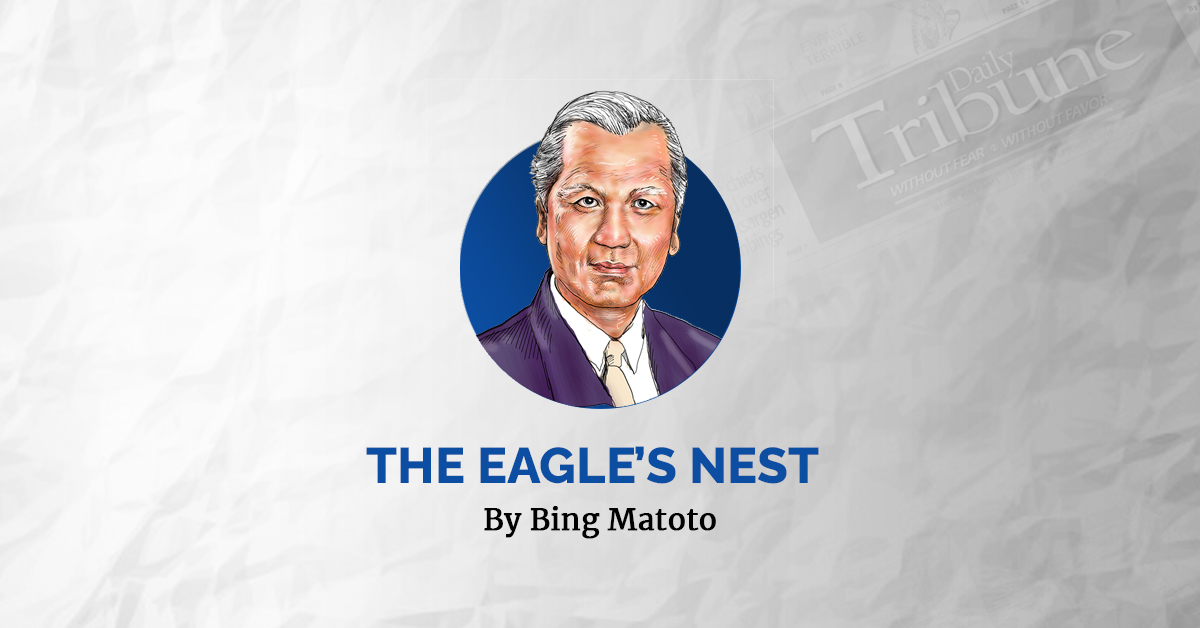The proposed Maharlika Investment Fund has attracted a lot of commentaries, mostly critical, as to the merits of such a vehicle. At first blush, the MIF has been cynically viewed as an anachronism since sovereign wealth funds are traditionally synonymous with surplus funds of a country gifted with abundant natural resources that are in great demand by other nations, such as oil.
As we are all aware, our best-selling export today is our people and, of course, this state of affairs is neither sustainable nor healthy for millions of our countrymen who must leave behind their loved ones.
Furthermore, the MIF has been criticized for some of its proposed features such as the funding modes that included mandating the participation of the GSIS and SSS, which clearly encroached on the pensions of private citizens. Since its inception, however, the structure has been tweaked and a few changes have been introduced under Senate Bill 1670 to address the various concerns, particularly that involving the mandated participation of GSIS and SSS.
So let’s take a second look at the MIF 2.0 version which as of this writing is currently being reviewed by the Senate. I sat through the initial Senate hearing replayed on YouTube which has been informative and has served to clarify a few points but has also raised a few questions in my view.
Let me share with you some of my impressions. First off, I didn’t get the drift that the deliberations were steamrolling the passage of the bill. I thought the remarks and questions posed by the senators were generally spot on and the responses of our economic managers were fairly clear as to why the need to create such a fund. As I understood it, the gist of the proposal is essentially to create a structure that will facilitate the mobilization of funds from both public and private institutions, including particularly foreign funding, and to facilitate the deployment of such funds that will be primarily directed to the priority sectors of the government.
As repeatedly cited during the hearing, a neighboring ASEAN country, Indonesia, which created its own fund in 2021, seems to be the closest example we can look at. We may not have the “surplus” situation that Indonesia enjoys but we do need to be competitive with our neighbor in the race to attract foreign funds. We need a relatively simple investment vehicle enjoying unique benefits such as the proposed tax and regulatory exemptions to attract foreign investors who are not necessarily strategic operators but simply passive funds looking to diversify country risk exposures.
Bottomline, I liken the MIF to mutual funds managed by non-banks or unit investment trust funds organized and managed by banking institutions that pool funds and invest in a wide array of investment options such as debt securities, listed stocks, or even unlisted shares based on the underlying investment principle of spreading, diversifying and hedging the risks. However, unlike these funds which are covered by regulations of their respective regulatory authorities — the SEC and BSP, respectively, it is not clear if the MIF will be covered by government regulations such as prescribed investment limits or will instead be guided solely by the directions of the MIF board based on the so-called Santiago Principles used by the International Forum of Sovereign Wealth Funds.
The bill is silent as to whether the MIF will be under the regulatory supervision of these government regulatory bodies and, if so, which regulatory authority, if any. I believe this needs to be clarified since the MIF is after all a Philippine corporate entity. The only regulatory reference is regarding the fit and proper rule which I believe only pertains to the eligibility of the directors.
Then there is the matter of the sovereign guarantee of the investment contributions into the MIF. Unlike a mutual fund or a UITF which are funded by investors that take on the full investment risks, the MIF investors shall be fully protected from any downside exposures. I can appreciate it if the funders are government agencies since it is effective from one pocket to the other, but what about the private investors? Are they also fully protected? This makes the MIF practically a government-owned fund with private funding investors just enjoying the upside returns without any principal risk. Is this really the intention?
There are other points that need further clarification such as taxes and space limitations that constrain me, but which I intend to cover as the Senate hearings evolve.
Until next week… OBF!
***
For comments, email bing_matoto@yahoo.com.
